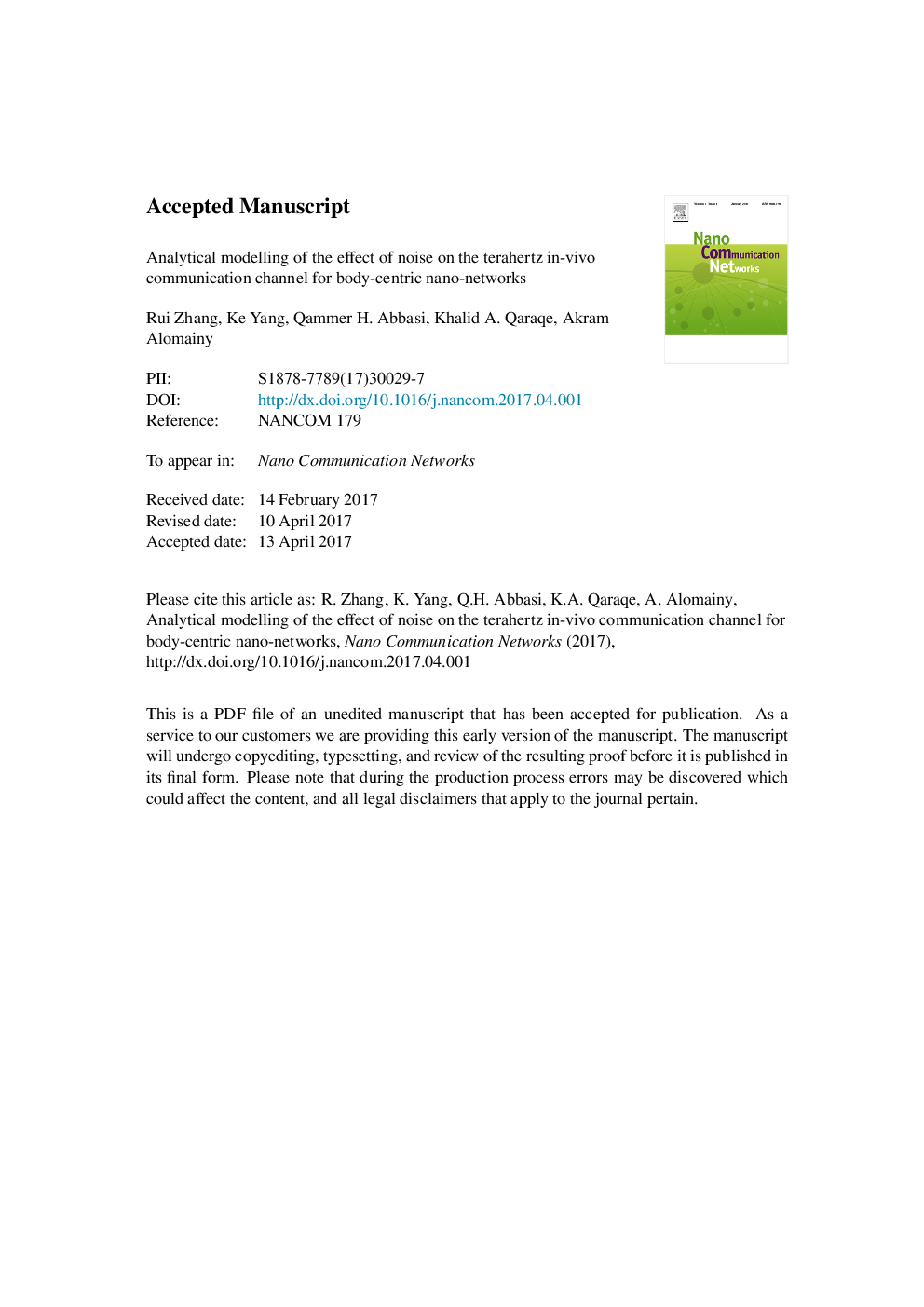| Article ID | Journal | Published Year | Pages | File Type |
|---|---|---|---|---|
| 6886046 | Nano Communication Networks | 2018 | 22 Pages |
Abstract
The paper presents an analytical model of the terahertz (THz) communication channel (0.1 - 10 THz) for in-vivo nano-networks by considering the effect of noise on link quality and information rate. The molecular absorption noise model for in-vivo nano-networks is developed based on the physical mechanisms of the noise present in the medium, which takes into account both the radiation of the medium and the molecular absorption from the transmitted signal. The signal-to-noise ratio (SNR) of the communication channel is investigated for different power allocation schemes and the maximum achievable information rate is studied to explore the potential of THz communication inside the human body. The obtained results show that the information rate is inversely proportional to the transmission distance. Based on the studies on channel performance, it can be concluded that the achievable transmission distance of in-vivo THz nano-networks should be restrained to approximately 2 mm maximum, while the operation band of in-vivo THz nano-networks should be limited to the lower band of the THz band. This motivates the utilisation of hierarchical/cooperative networking concepts and hybrid communication techniques using molecular and electromagnetic methods for future body-centric nano-networks.
Keywords
Related Topics
Physical Sciences and Engineering
Computer Science
Computer Networks and Communications
Authors
Rui Zhang, Ke Yang, Qammer H. Abbasi, Khalid A. Qaraqe, Akram Alomainy,
